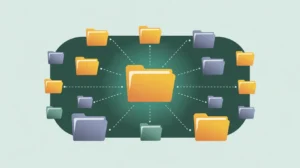Importance of Current Liabilities
Current liabilities are central to understanding a nonprofit’s short-term financial obligations. They represent debts or commitments due within one year and are critical for assessing liquidity and financial stability. For nonprofits in social innovation and international development, current liabilities matter because delayed donor disbursements, multi-year projects, or international operations can complicate cash flow. Monitoring these obligations ensures that payroll, vendor contracts, and program commitments are met on time, preserving trust with staff, partners, and communities. Donors, boards, and regulators view current liabilities as a signal of how well an organization balances financial commitments with available resources.
Definition and Features
Current liabilities are defined as obligations a nonprofit must settle within one year or its normal operating cycle, whichever is longer. They typically include accounts payable, accrued expenses, deferred revenue, short-term loans, and the current portion of long-term debt. These are recorded on the Statement of Financial Position, usually in order of maturity. Current liabilities differ from non-current liabilities, which extend beyond one year, and from expenses, which are costs recognized in the Statement of Activities. By comparing current liabilities with current assets, stakeholders can gauge whether the organization can meet obligations without jeopardizing liquidity.
How This Works in Practice
In practice, nonprofits manage current liabilities through careful cash flow planning and monitoring. For example, accounts payable may include vendor invoices for program supplies, while accrued expenses might cover salaries earned but not yet paid. Deferred revenue is common when donors or grantmakers provide funds in advance of deliverables, creating a liability until the work is performed. Finance teams use schedules to track due dates, prioritize payments, and avoid penalties or reputational risks. They also calculate liquidity ratios, such as the current ratio (current assets ÷ current liabilities), to evaluate short-term solvency. Mismanagement of current liabilities can result in missed payments, strained vendor relationships, or noncompliance with donor agreements.
Implications for Social Innovation
For nonprofits engaged in social innovation and international development, current liabilities provide critical insight into operational resilience. They show whether an organization can sustain activities in the face of funding delays, donor restrictions, or complex international transactions. Transparent reporting of current liabilities reduces information asymmetry by giving stakeholders a clear picture of near-term risks and obligations. Funders and partners often view low and well-managed current liabilities as a sign of stability, while excessive or unmanaged liabilities may raise concerns about sustainability. By demonstrating responsible stewardship of short-term commitments, nonprofits reinforce credibility, strengthen partnerships, and build the financial trust needed to advance mission-driven impact.







